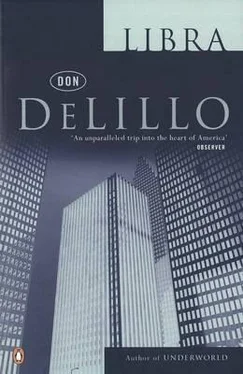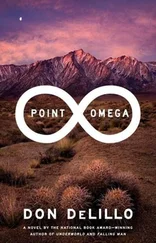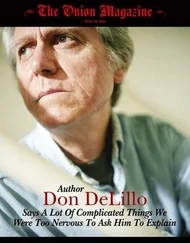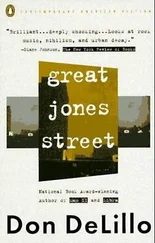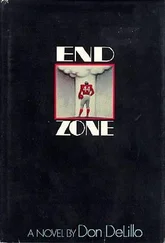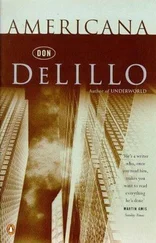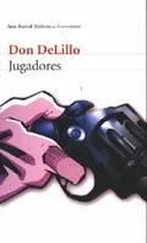Don DeLillo - Libra
Здесь есть возможность читать онлайн «Don DeLillo - Libra» весь текст электронной книги совершенно бесплатно (целиком полную версию без сокращений). В некоторых случаях можно слушать аудио, скачать через торрент в формате fb2 и присутствует краткое содержание. Жанр: Современная проза, на английском языке. Описание произведения, (предисловие) а так же отзывы посетителей доступны на портале библиотеки ЛибКат.
- Название:Libra
- Автор:
- Жанр:
- Год:неизвестен
- ISBN:нет данных
- Рейтинг книги:3 / 5. Голосов: 1
-
Избранное:Добавить в избранное
- Отзывы:
-
Ваша оценка:
Libra: краткое содержание, описание и аннотация
Предлагаем к чтению аннотацию, описание, краткое содержание или предисловие (зависит от того, что написал сам автор книги «Libra»). Если вы не нашли необходимую информацию о книге — напишите в комментариях, мы постараемся отыскать её.
Libra is proof that the best authors can do anything they want. A book about Lee Harvey Oswald, Libra manages to get into Oswald's head and yet leave him a mystery because DeLillo knows the degree to which some men are enigmas even to themselves. A book about the history of event, and the John F. Kennedy assassination, Libra is also a study of the men who shape history, and the men who record history. And best of all, a book about society and the forces sweeping through it, Libra feels like a personal statement, an honest challenge to measure oneself, an expression of intimacy in recounting an event in which so many have lost themselves by creating paranoid spirals that are both joyous and dreadful celebrations of the helplessness of the self.
DeLillo accomplishes this by doing what I believe is a fairly radical act: daring to empathize with Lee Harvey Oswald (I can't help but think this is what led George Will to denounce Libra as "an act of literary vandalism and bad citizenship"). I barely know anything about DeLillo, and yet even to me, the very first section, In The Bronx, a section that opens with an anonymous "he" riding the subway to the ends of the city ("There was so much iron in the sound of those curves he could almost taste it, like a toy you put in your mouth when you are little."), seems an acknowledgment of equivalency-DeLillo grew up in the Bronx, and generously gives young Oswald, who is living there at the book's opening, the keenly observed details only a longtime resident or a talented artist might notice. From this, DeLillo measures Oswald's meandering grasping life in terms with which any struggling artist, feeling adrift and alone in the grip of a desire to accomplish something great, could identify. (Until finally, after the shooting of Kennedy, Oswald making his way through the poor section of Dallas avoiding police, there is this: "A dozen old hair-drying machines stood along the curbside. A mattress on a lawn. He wanted to write short stories about contemporary American life.") By the end, DeLillo gives us Oswald as someone almost like Kafka's hunger artist ("He is commenting on the documentary footage even as it is being shot. Then he himself is shot, and shot, and shot, and the look becomes another kind of knowledge. But he has made us part of his dying."), revealing the horror of art and its motivations when they cannot escape into art's abstract realm.
Libra also considers the men who might have been involved in the plot to kill a president, moving inside the heads of George de Mohrenschildt, crime lord Carmine Latta, Jack Ruby, Agency spook T.J. Mackey and most stunningly David Ferrie, the odd hairless man somehow always at the center of everything. Ferrie was a man who might have been famously eccentric on his own, what with his rare disease that rendered him completely hairless, and resultant crazy wigs and glued on eyebrows, and pilot's uniforms, and open homosexuality, and links to crime figures, gunrunners, and other figures not normally given to mingling with openly gay wig-wearing hairless men. He feels fully like a literary creation, endlessly chattering on about death, about cancer, about fear, about ESP and hypnotism and astrology, but David Ferrie was a very real figure-one whom DeLillo manages to recreate so completely it feels like an act of utter invention.
And so, mirroring DeLillo, there's Win Everett, a CIA man disgraced by his role in the Bay of Pigs disaster, who hatches the Kennedy assassination plot and similarly finds himself creating a man who already exists. (Everett creates forged documents and fake items to cast Oswald's life in a strangely ambiguous light, so that investigators will continue to follow all the twisting paths to the truths Everett wishes them to discover. But he finds that Oswald, independently of Everett, is creating such a life already, following Everett's plans without actually knowing them.) In the shadow of retirement, Everett plans to refire his countrymen's passion for a democratic Cuba by using a failed assassination attempt on Kennedy; an attempt that, in the following investigation, will also throw light on the CIA's role (and his own) in the overthrow of Cuba. Everett is the artist at another extreme, safely installed in American culture (married, with a young daughter, teaching at Texas Women's University), and yet also plotting to change the way Americans see America, with a plan that, like the best literature, mixes the deeply personal with the sweepingly resonant. It is Everett that observes: "Plots carry their own logic. There is a tendency of plots to move toward death. He believed that the nature of death is woven into the nature of every plot. A narrative plot no less than a conspiracy of armed men." It is, of course, the observation of a writer.
Everett's twin is Nicholas Branch, a present-day senior analyst of the CIA, hired by them on contract to write the secret history of the assassination of President Kennedy. Branch is thus both a writer and literary critic of historic event: "Let's devote our lives to understanding this moment, separating the elements of each crowded second. We will build theories that gleam like jade idols, intriguing systems of assumption, four-faced, grateful." Throughout most of the book, a section on Branch usually immediately follows or precedes a section on Everett, joining them in the reader's mind, and it is Branch who gets the lines Kennedy conspiracy theorists (of which I could consider myself, if there is a weight division below "piker") will find the richest, such as referring to the Warren Report as "the megaton novel James Joyce would have written if he'd moved to Iowa City and lived to be a hundred" and commenting on how different Oswald looks from one photo to the next. (I laughed out loud at the description of a famous photo of Oswald as a marine, with a group of fellow marines on a rattan mat under palm trees: "Four or five men face the camera. They all look like Oswald. Branch thinks they look more like Oswald than the figure in profile, officially identified as him." This was doubly funny to me having just seen the photo on the web, the day before I read that section, and, without registering it, having thought the same thing.) (Of course, now, just a few days later, I can't find that photo online anymore.)
And it is through Branch, I think, that DeLillo writes the lines emphasizing how the creation of event and the creation of fiction are conjoined. Referring to Branch's paper-laden workroom, there is this: "This is the room of dreams, the room where it has taken him all these years to learn that his subject is not politics or violent crimes but men in small rooms." The men in Libra, including Lee Harvey Oswald, are such men, as are all writers. But Libra is all too aware of how such men, like Branch himself (in his small room seeing his subject as men in small rooms), and perhaps like all men, are ultimately only capable of writing on the vast skein of reality not what they do know, but merely tacit admissions of everything they don't know-about themselves and about the world, and about the strange vector where the two unknown variables meet, creating the ambiguous equations of history.
